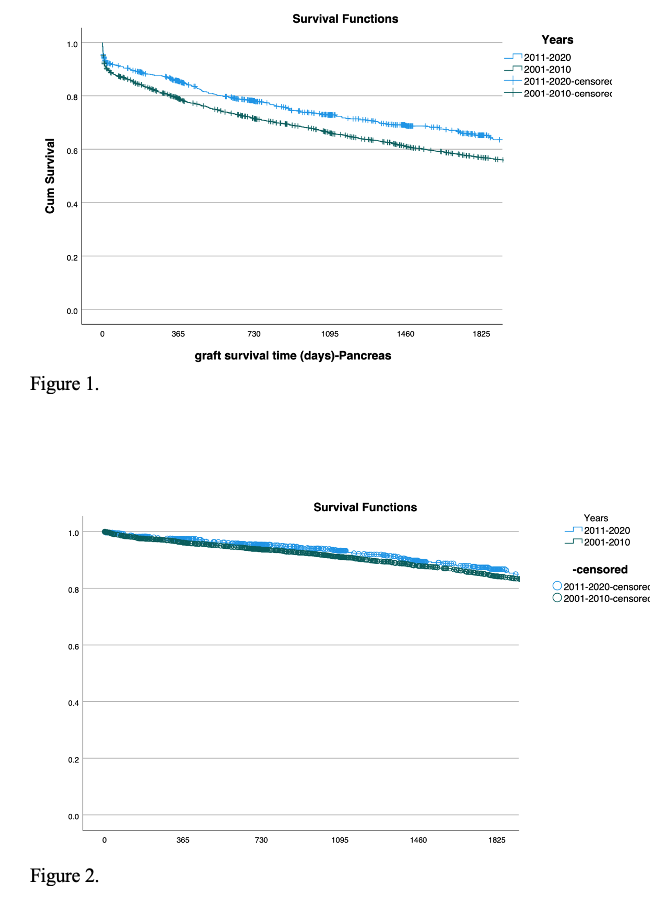Chief of Transplantation Services
Surgery
SUNY Upstate Medical University
Pancreas After Kidney Transplantation Outcomes Over the Past 20 Years in the USA
Mahmoudreza Moein1, Brendan Maloney1, Amin Bahreini1, Reza Saidi1.
1Surgery, Transplantation services, SUNY Upstate Medical University, Syracuse, NY, United States
Introduction: The number of pancreas transplants performed each year has been variable since 1988 when the Organ Procurement Transplant Network (OPTN)/Scientific Registry of Transplant Recipients (SRTR) began tracking transplant data. The most recent OPTN/SRTR data shows a 9.1% increase in pancreas after kidney (PAK) transplants.
Material and methods: We performed a retrospective registry analysis utilizing the OPTN/UNOS database for pancreas transplants after kidney transplants performed in the United States from January 2001 to December 2020 to assess transplant outcomes. The data was collected directly from the de-identified information contained within the database. Pancreas transplants without outcomes data were excluded.
Results: 3706 allograft recipients were included in the study. 2892 (78%) transplants were done from 2001 to the end of 2010. 814 (22%) transplants were done from 2011 to the end of 2020. Table 1 summarises the demographic characteristics of each group. Although the BMI and recipient sex comparison shows a statistically significant difference, the differences are not clinically significant. The overall 5-year allograft survival rate was 55.95% in the 2001-2010 group, which significantly increased to 63.67% in the 2011-2020 group (P=0.001) (Fig 1). The allograft survival difference increased significantly after 10 years of follow-up (39.58% vs. 51.41%, P<0.001). The overall 5-year patient survival rate was 83.12% in the 2001-2010 group, which increased to 84.88% in the pancreas after kidney transplants from 2011 to 2020 (P=0.41) (Fig 2). The 10-year patient survival rate was 61.37% in the 2001-2010 group, and 67.76% in the 2011-2020 group (P=0.14)


Conclusion: With all the progress in terms of surgical techniques, organ allocation and preservation, and immunosuppressive regimens, the pancreas after kidney transplant allograft survival has been improving over the years. However, PAK utilization has decreased despite significant survival improvements over the years. Therefore, PAK is a great considerable option of choice for uremic recipients with diabetes.
Lectures by Reza F. Saidi
| When | Session | Talk Title | Room |
|---|---|---|---|
|
Fri-27 11:35 - 12:35 |
Cell-based immune therapy for transplantation | Pancreas After Kidney Transplantation Outcomes Over the Past 20 Years in the USA | Indigo 204 |
